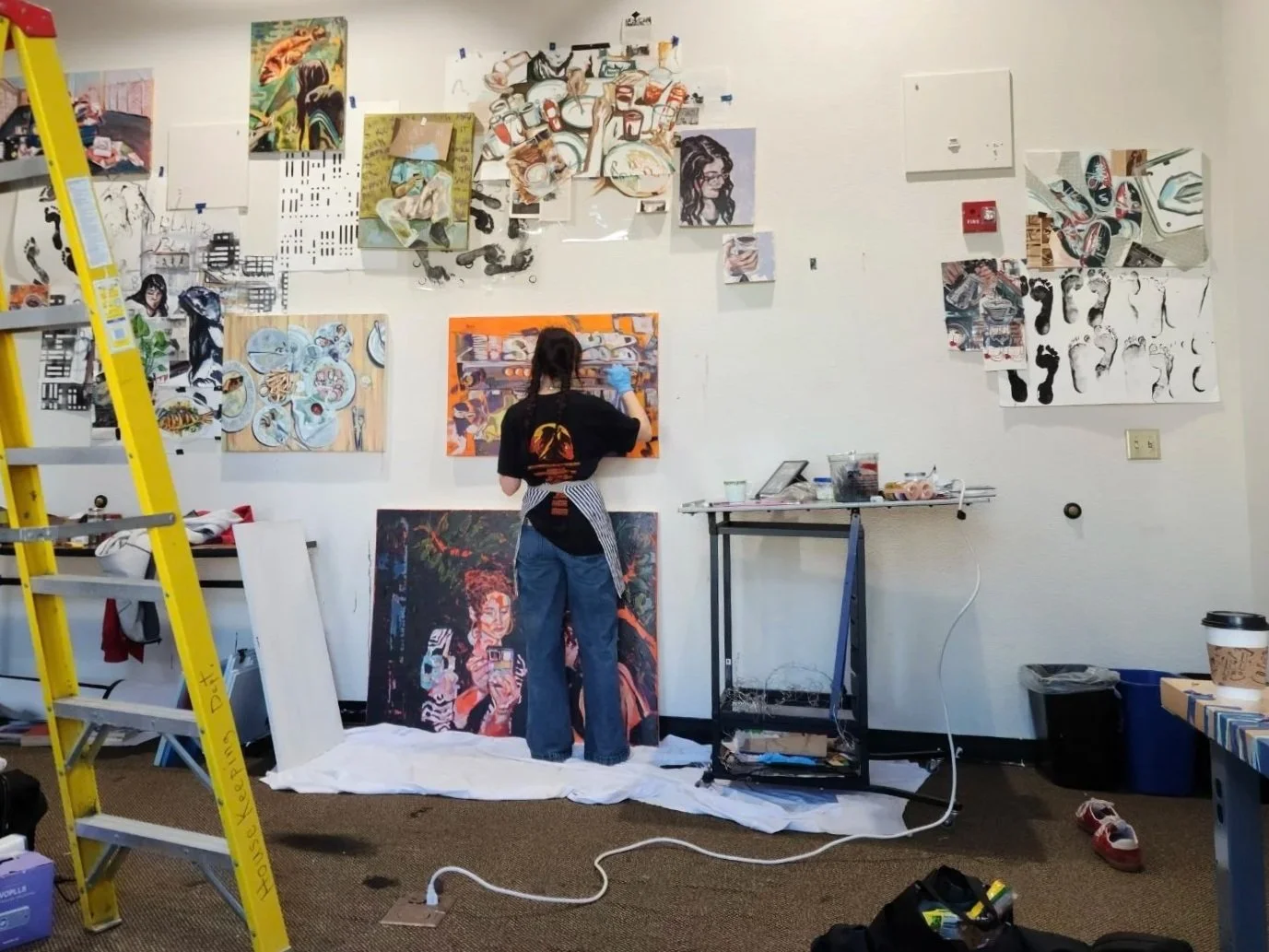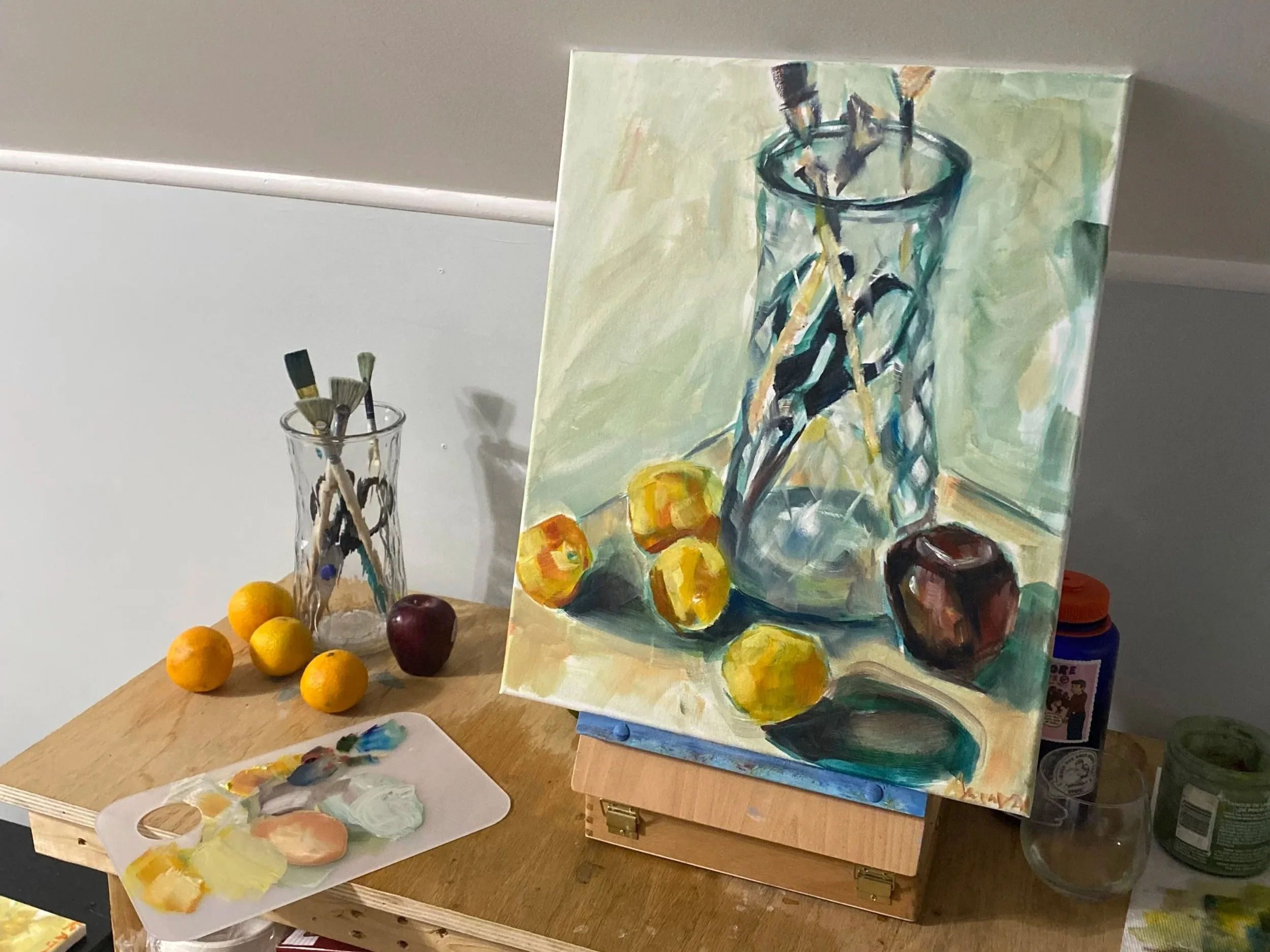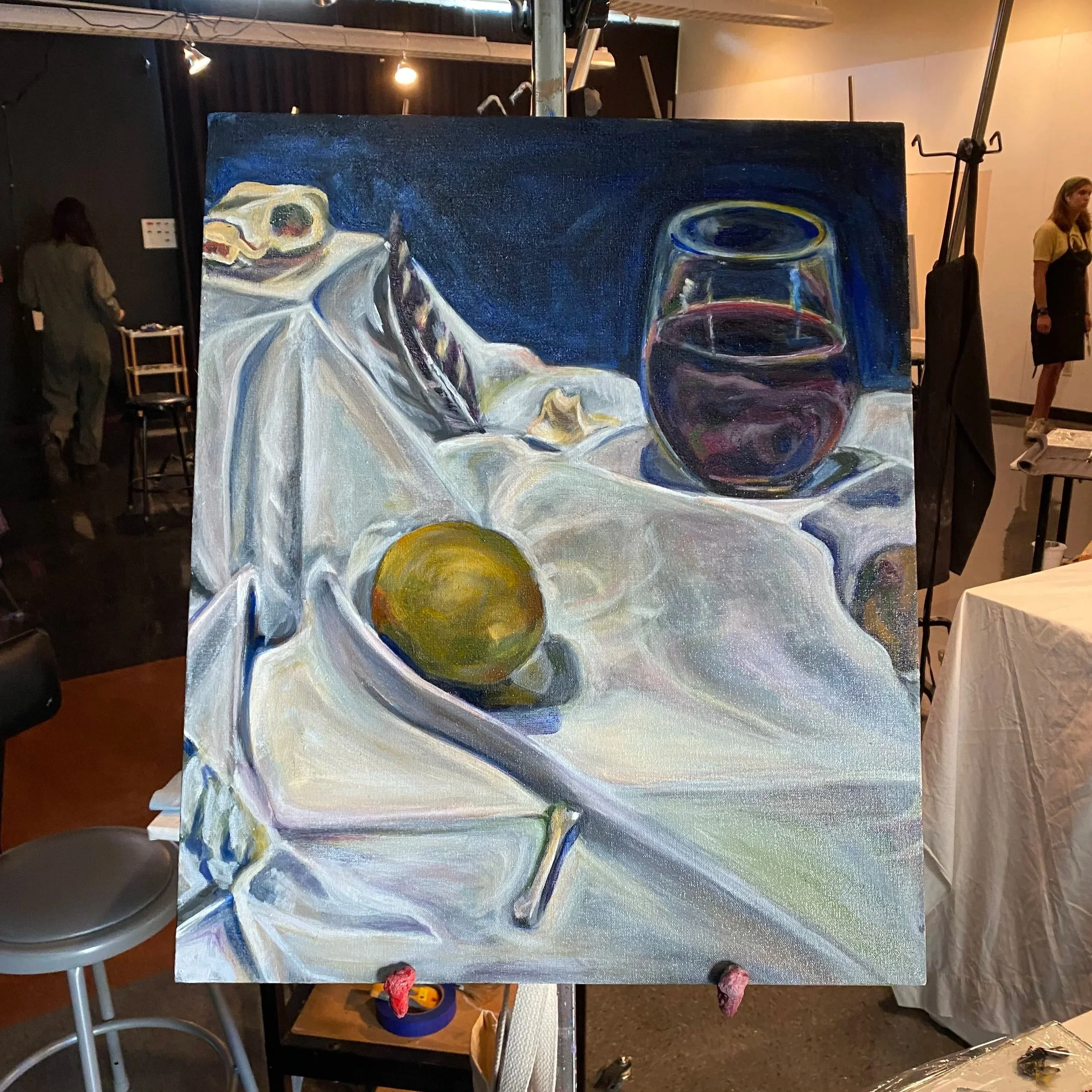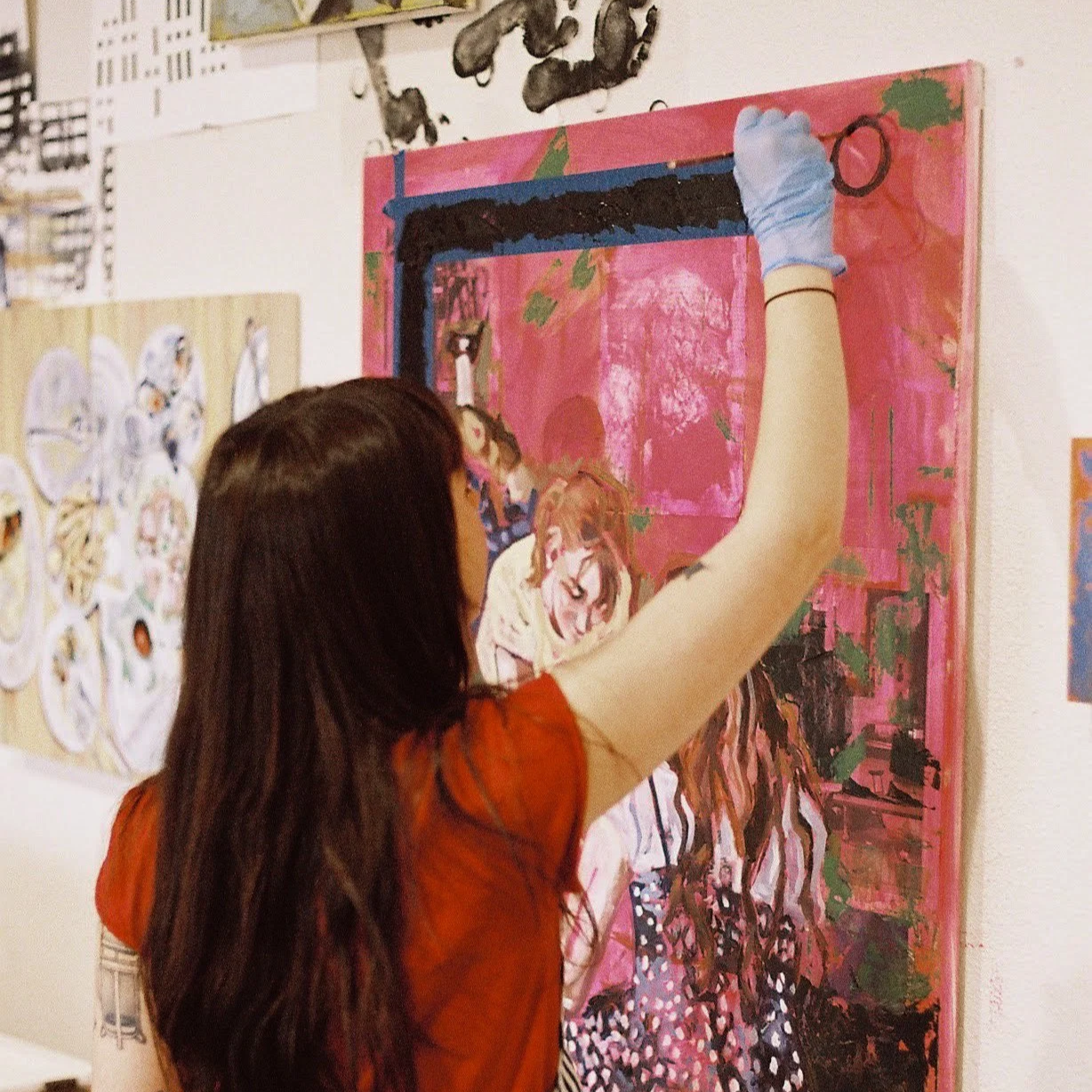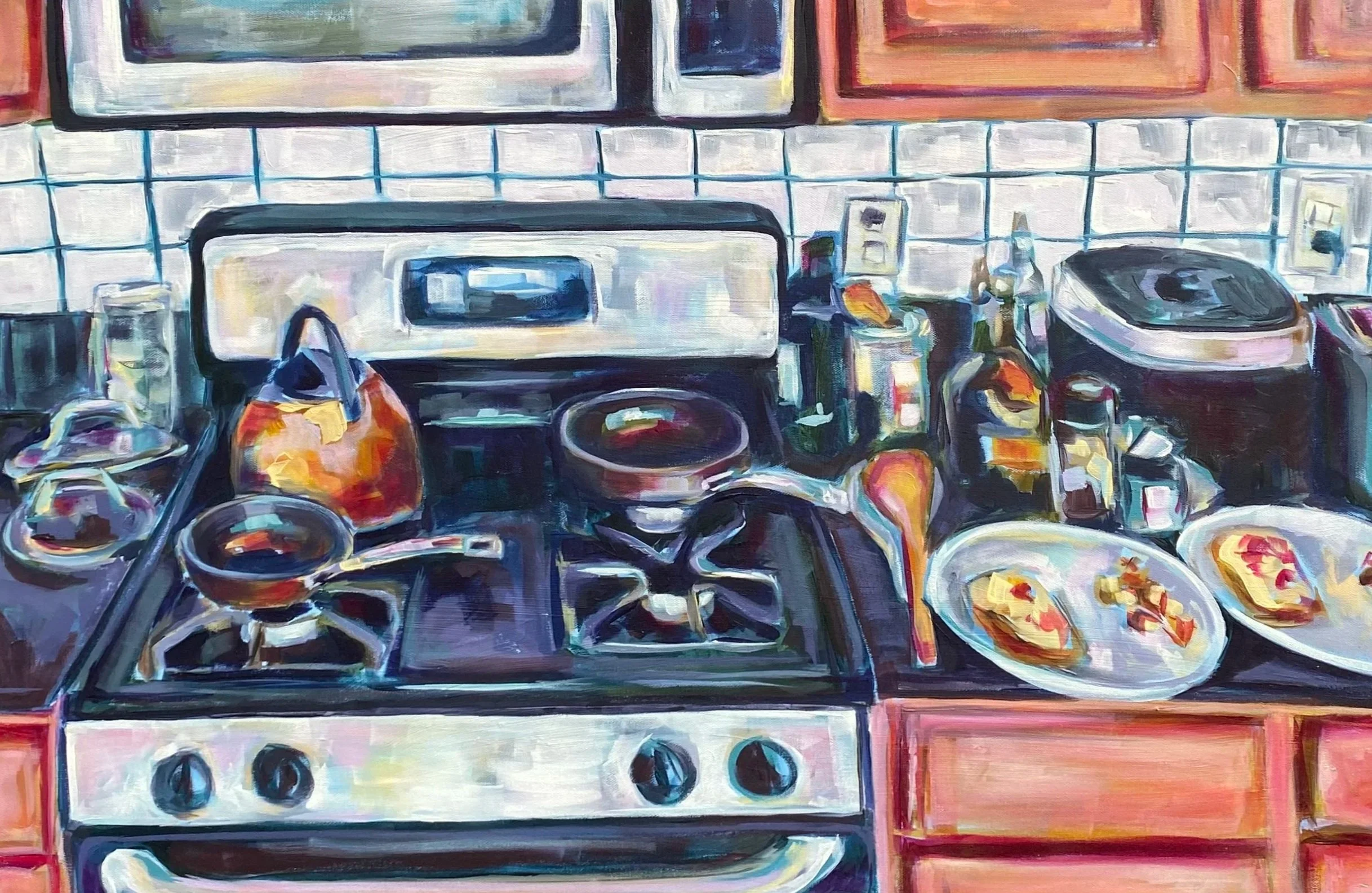From Still Life to Real Life: I don’t stage my mess
In every traditional painting class, the first thing they teach you is how to paint a still life. A few pieces of fruit, a goblet, maybe a cut lemon on a white cloth. Your professor sets it up just so—carefully arranging the items into a tidy little tableau. Then you’re given hours, sometimes multiple sessions, to replicate the setup with precision. Form, perspective, shadow, color. The assignment is about learning to see.
And it works. It’s a solid technical foundation. But it never felt like the whole story to me.
a recent still-life set up for practicing painting from life
I remember one setup in particular: a glass of red wine sitting just off-center on a perfectly folded white sheet. But we didn’t use wine—we used grape juice, which started to mold after a couple of days under the lights. Every morning before I could start painting again, I had to quietly swap in a new glass, trying to match the original color and placement. It felt like I spent more time managing the illusion than I did making the painting.
And then there was the cake. A second still life: one beautifully frosted, untouched cake with a single slice removed like it had been cut by a scalpel. It looked pristine. But what I remember more vividly is what happened after the painting session. We cut up the rest of the cake and shared it with the department. People wandered in from other studios, curious. We ran out of forks and started using the back ends of paintbrushes. That moment—the chaos, the closeness, the joy—never made it into anyone’s canvas. But that was the real story.
Still life, by definition, asks you to stop the world and compose something serene. It freezes a moment in time, polishes it, elevates it. But life doesn’t work like that. And neither do I.
When I walk into my kitchen or studio, I’m not greeted by pristine arrangements. I see clutter, dirty dishes, piles of paper, half-eaten snacks—the aftermath of something real. These scenes aren’t carefully curated; they’re found. They’re leftovers. They feel far more meaningful to me than a perfect pear posed on a silk napkin ever could.
So no, I don’t clean up before I paint.
I paint what’s already there.
I think of my work not as still life, but as something more active. Messy. Uncontrolled. Alive. Like artist Josephine Halvorson says: “Painting as a record of the time spent with this thing.” That’s what I’m after—not just the object, but the moment around it. The context. The energy. The smell in the room. The conversation that just ended. The silence that followed.
Everyone wants to make something beautiful. But I think the most honest kind of beauty is the kind that doesn’t need to be staged. I don’t want my paintings to pretend. I want them to reflect what it actually looks like to live in a space. The spilled coffee. The crumbs on the table. The biscuit mid-bite. The way a pile of laundry ends up forming its own kind of landscape.
Classical still lifes have always been about value—what’s worth displaying, preserving, remembering. But what we choose to paint (and what we choose to clean up before we do) says something about what we think is worth noticing. If we only ever paint the clean table, the untouched fruit, the polished glass—what are we saying about the mess we all live with?
To me, there’s something political about resisting that polish. About choosing to see—and show—what doesn’t usually get shown. Messy domestic spaces have long been dismissed as unimportant, private, or feminine in a way that’s meant to devalue them. But these are the spaces where care happens. Where connection happens. Where time leaves its mark.
So I leave the dishes in the sink. I let the crumbs stay on the counter. I paint around the chaos—or directly through it. Because I’m not trying to make an image of how life should look. I’m trying to paint how it actually feels.
And maybe, when someone sees these unposed, lived-in spaces on canvas, they recognize a little bit of their own life in the mess. Maybe they remember the dinner party, not the cleanup. The joy of the moment, not the effort to stage it. Maybe they think back to the cake they shared with friends, using whatever tools were on hand. Or the quiet, repetitive work of refilling a glass of grape juice, trying to keep everything looking "just right," even when it wasn’t.
Because the real story isn’t in the carefully lit slice on a pedestal. It’s in the fingerprints on the glass. The napkin pushed aside. The last bite that didn’t make it to the plate. The mold that creeps in anyway.
What does your everyday mess say about you?
I’d love to know.
